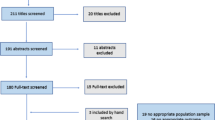Abstract
Purpose
Trehalose eyedrops were found by a previous study to be safe and effective compared with saline in the treatment of moderate-to-severe dry eye syndrome. The present study was designed to compare the efficacy of trehalose eyedrops with that of the commercially available eyedrops containing hyaluronan or cellulose now used in the treatment of moderate-to-severe dry eye syndrome.
Methods
In a randomized, double-masked, 4-week crossover, controlled clinical trial, 36 patients with moderate-to-severe dry eye syndrome were divided into two groups: the hyaluronan (Hyalein)-comparison group (18 patients) and the hydroxyethylcellulose (Mytear)-comparison group (18 patients). Each group used either trehalose or one of the commercially available medications contained in a masked eyedrop container for the first 4 weeks, and then for the second 4 weeks, switched to either trehalose or the commercial eyedrop not used for the first 4 weeks. Symptoms and signs in both eyes were recorded at the baseline, at 4 weeks, and at 8 weeks.
Results
At 4 weeks after the treatment, fluorescein and rose bengal staining scores of the ocular surface as well as the tear film breakup time had improved significantly with trehalose eyedrops compared with the commercially available eyedrops containing either hyaluronan or hydroxyethylcellulose (P < 0.001, Wilcoxon signed ranks test). In addition, all the objective signs were significantly better in patients who finished with trehalose at the end of the 8-week trial compared with those who finished with either of the two commercially available drugs. A larger number of patients evaluated trehalose as a better treatment than the commercially available eyedrops.
Conclusions
Trehalose solution was a better treatment for moderate-to-severe dry eye syndrome in comparison with two commercially available eyedrops containing hyaluronan or hydroxyethylcellulose.
Similar content being viewed by others
Author information
Authors and Affiliations
Corresponding author
Additional information
Presented in part at the annual meeting of the American Academy of Ophthalmology, Orlando, Florida, October 2002. Toshihiko Matsuo is the inventor of “Trehalose Eyedrops for Dry Eye Syndrome”. The patent rights are held by Hayashibara Biochemical Laboratories, Okayama, Japan, in which Dr. Matsuo has no financial interest.
About this article
Cite this article
Matsuo, T. Trehalose Versus Hyaluronan or Cellulose in Eyedrops for the Treatment of Dry Eye. Jpn J Ophthalmol 48, 321–327 (2004). https://doi.org/10.1007/s10384-004-0085-8
Received:
Accepted:
Published:
Issue Date:
DOI: https://doi.org/10.1007/s10384-004-0085-8




